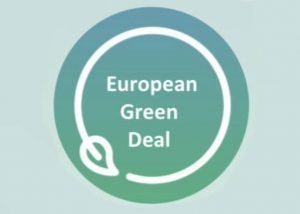
pinfa supports the European Commission’: “safer and more sustainable chemicals are a great economic opportunity”. Part of the Green Deal, the new EU “Chemicals strategy towards a toxic-free environment” defines a number of orientations and changes in EU chemicals policy which will be taken forward in coming months and years.
Flame retardants are mentioned only once in background information “… hazardous chemicals in human blood and body tissue, including … … … and flame retardants”.
Under innovation, opportunities for chemicals in certain sectors is noted: “construction materials, textiles, low-carbon mobility, batteries, wind turbines and renewable energy sources”. pinfa notes that flame retardants play a valuable role in all of these sectors where fire safety is important.
Several of the actions announced are of specific relevance to pinfa:
- “develop EU safe and sustainable-by-design criteria for chemicals” including introducing into REACH information requirements on “overall environmental footprint” of chemicals.;
- emphasis on recycling, including “investments in innovative technologies to address the presence of legacy substances in waste streams”;
- “promote the EU’s resilience of supply and sustainability of chemicals used in essential applications for society through EU funding and investment mechanisms”
- defining a “research and innovation agenda for chemicals”
- defining criteria for “essential uses” of chemicals.
Some FRs will be concerned by actions applicable to all chemical classes, such as
- Introducing into REACH chemical safety assessments a “mixture assessment factor” and other actions on combination effects of chemicals
- new hazard classes and CLP Regulation criteria for environmental toxicity, persistency, mobility, bioaccumulation, endocrine disruptors; banning of endocrine disruptors in consumer products as soon as they are identified (except provenly essential uses);
- review of the definition of nanomaterials;
- extension of REACH registration to “certain” polymers;
- emphasis on compliance, e.g. for REACH dossiers, and on information on chemicals in products, e.g. by “introducing information requirements in the context of the Sustainable Product Policy Initiative”.
In a separate document, the European Commission reviews art. 33 of REACH: supply chain information on SVHCs (substances of very high concern) in articles. The conclusion is that this article is not effectively implemented: retailers do not have adequate information, and are unable to respond to consumers’ ‘right to know’. The situation is even worse for articles placed on the market by e-commerce where there is a “general lack of information on the presence of SVHCs”
Summary: European Commission press release IP/20-1839, 14th October 2020 “Green Deal: Commission adopts new Chemicals Strategy towards a toxic-free environment” https://ec.europa.eu/commission/presscorner/detail/en/ip_20_1839
COM(2020)667 “Chemicals Strategy for Sustainability Towards a Toxic-Free Environment”, 14th October 2020 https://ec.europa.eu/environment/pdf/chemicals/2020/10/Strategy.pdf
SWD(2020)247 review of Implementation of art. 33 of REACH (supply chain information on SVHCs in articles) “Review of certain provisions of Regulation (EC) No 1907/2006 concerning the Registration, Evaluation, Authorisation and Restrictions of Chemicals (REACH), as laid down in its Article 138”, 14th October 2020 https://ec.europa.eu/environment/pdf/chemicals/2020/10/SWD_article_138.pdf